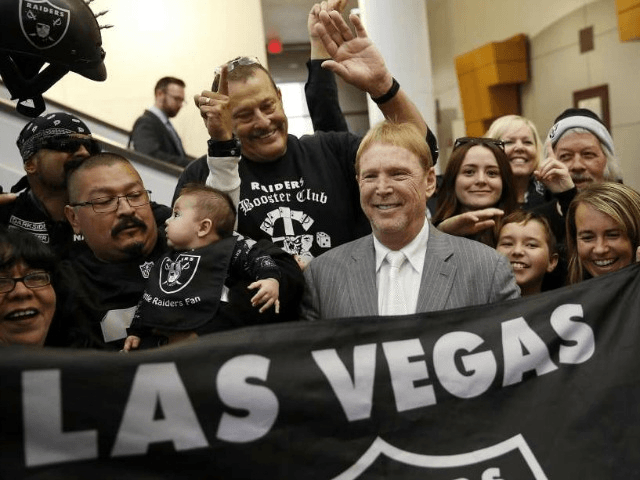A viable high-speed rail system that actually serves consumer interest may be built in California after all.
Of course, it won’t be the Jerry Brown boondoggle that will cost California taxpayers north of $68 billion and, nearly a decade after gaining voter approval, is still barely a hole in the ground. Instead of connecting Los Angeles with San Francisco, this high-speed rail line will send millions of Southern Californians to Las Vegas and back — to gamble, have a good time, and maybe attend Raiders games.
That’s right: after the Raiders won NFL owners’ approval to relocate from Oakland to Las Vegas — in time for the 2020 season — a new life has been breathed into the SoCal-Vegas rail project.
In a Las Vegas Review-Journal story, the paper cited the impending arrival of the Raiders, along with the Trump administration’s pledge to spend on infrastructure, as reasons for the revival of a once-thought doomed project:
The recently completed investment grade ridership and revenue forecast study completed by Southern California’s High Desert Corridor Joint Powers Authority reiterated what longtime Las Vegas developer Tony Marnell has suspected all along — that there would be significant demand for the XpressWest high-speed rail project linking Southern California with Las Vegas he wants to build.
President Donald Trump’s desire to invest in infrastructure projects, the favorable ridership study and a new reason for Southern Californians to make quick trips to Las Vegas in a few years — NFL football games, concerts and other special events — add up to new hope to press forward on the $7 billion rail project that has been under consideration for more than a decade.
There has not been rail service between Los Angeles and Las Vegas since Amtrak abandoned the line in the late 1990s. A typical drive between the two cities takes at least four hours through the high desert in ideal conditions. But on a busy weekend, that 280-mile journey can easily take up to seven hours each way.
A viable high-speed rail can eliminate a lot of that congestion on the Interstate 15, deliver millions of travelers within three hours each way, and boost the already booming tourism for Sin City.
And despite the fact that the Rams and Chargers will now call Los Angeles home, the most popular NFL team in Southern California remains the Raiders, who played at the L.A. Memorial Coliseum from 1982-94 and retain a large fan base. The SoCal legion of “Raider Nation” has traveled for years to home games in Oakland and road games in San Diego, so trips to Vegas to cheer on the Silver and Black will be very much on their agenda after the Raiders’ new home opens for the 2020 NFL season.
Marnell, a longtime Southern Nevada developer told the Review-Journal that a recent study showed that an estimated 27 percent of travelers from Southern California would take high-speed rail to Las Vegas if it existed. This report added that the ridership demand combined with the cost of round-trip tickets, with an average of $115, would generate more than $1 billion a year in operating revenue when the system is fully operational in 2035. A train could be running sooner, Marnell said, with an estimated two to three years to ramp up and four to five to build.
Marnell also credited President Trump’s election for the resurrection of the project, telling the Review-Journal: “We all know that the Republicans are not big advocates of spending money on infrastructure, although this president is one of the first presidents to come along in a long time that recognizes the country needs another investment in infrastructure and it needs an investment in 21st century technology.”
Follow Samuel Chi on Twitter @ThePlayoffGuru.

COMMENTS
Please let us know if you're having issues with commenting.